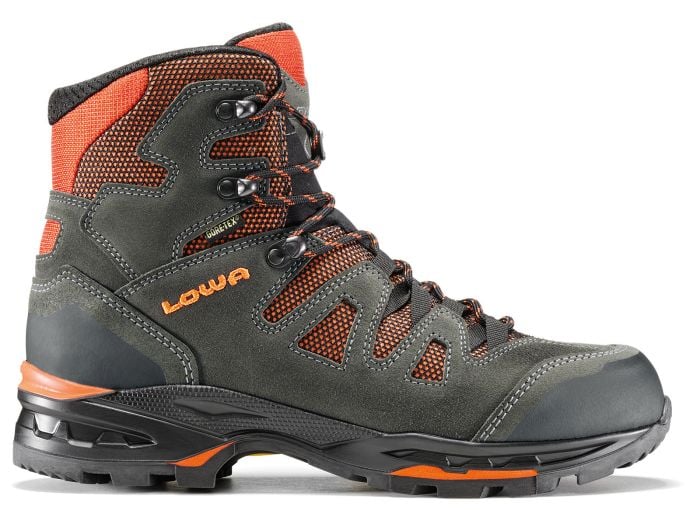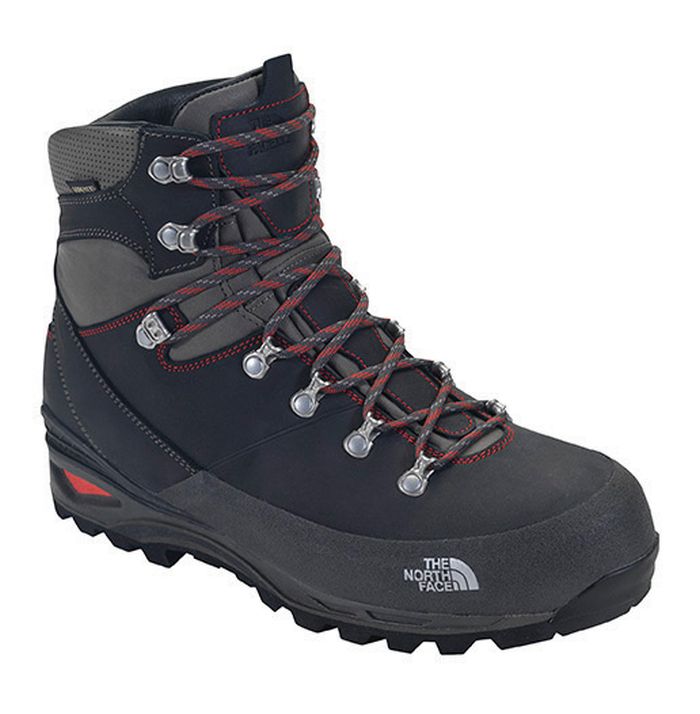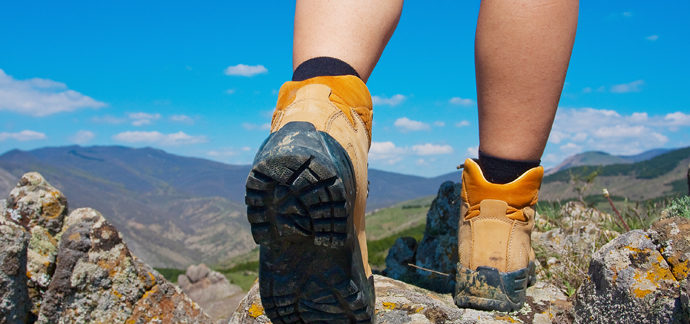Buying hiking boots can be a really complicated business. There are so many different options (here are some of our favourites) from various brands but they should all come with the same basic features. So below we have outlined what a hiking boot is comprised of so that you know what you are looking at when it comes to buying a new pair.
Ankle cuff
Ankle cuffs provide support for the ankle, and as a general rule, the more cushioning there is, the more comfy the boot is. Some companies are starting to add memory foam cushioning into their hiking boots, taking comfort to the next level.
Waterproof lining
Waterproof linings, made from fabrics such as Gore-Tex, are there to keep the wet stuff out, but they all have their limitations. If a boot’s outer becomes waterlogged, the waterproof lining will lose most of its breathable properties and moisture will start to build up on the inside (a good reason to regularly re-waterproof your boots). Once water gets in it won’t come out unless you take the boot off and shake it out. This is when it’s important to consider whether to go for the more naturally waterproof leather, or fabrics using waterproof technologies which tend to be more breathable.
Upper
Leather or fabric is the big decision. Leather used to be viewed as the heavier and tougher of the two, with fabric traditionally being lighter and more forgiving but less hard-wearing. These days there’s less of a difference and a lot of hiking boots will have a fabric/leather mix. Personal preference will play a big part in which one you go for.
Lacing
Laces should run smoothly and maintain a constant tension. Some lacing systems will feature locking loops for the laces so that they don’t slip; we like these as they also make lacing up the boot easier.
Toe box
A toe box is usually sandwiched between the inner and outer boot to give shape and protection here. The stiffer the toe box, the more protection you will have.
Footbed
Footbeds, or insoles, are the removable inserts that lie directly under the foot. The standard footbeds that come with boots can be quite basic, but they can be swapped for more supportive, comfortable after-market products (try Superfeet or Grangers).
Sole unit
Soles should keep you upright on everything from soft, wet, muddy ground to rocky terrain. Some will be better that others on specific terrain but, as with the tyres on a 4×4, deep treads are better for dealing with muddy conditions and self-cleaning channels help prevent build-ups of mud underfoot.
Midsole
You can’t see the midsole (it’s between the outer sole and the inner lining) but it’s probably the most important feature of a boot. The midsole provides the boot’s forward flex, side-to-side stiffness and underfoot cushioning. The more flexible the boot from heel-to-toe and side-to-side, the more comfort it will provide. The stiffer the boot, the more stability and support for the foot.
Heel cup
Sandwiched between the inner and outer boot, the heel cup gives the boot shape and protection at the heel, and supports and holds the foot in place.
Rand
The boot’s rand protects the lower part of the upper fabric from scuffs and bumps. A good protective rand will help increase the longevity of a boot.



